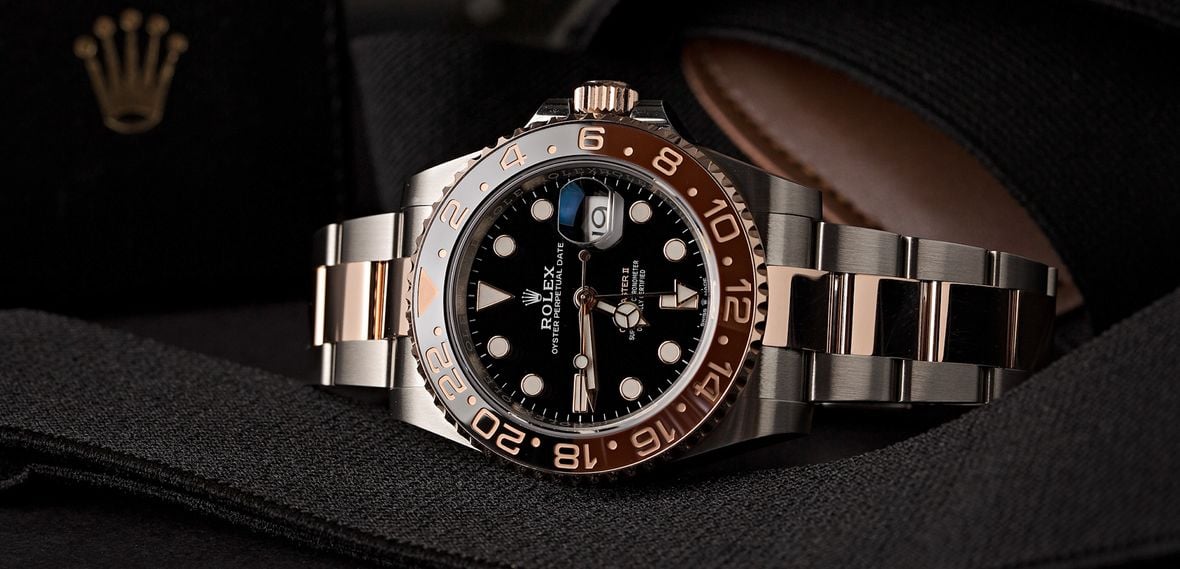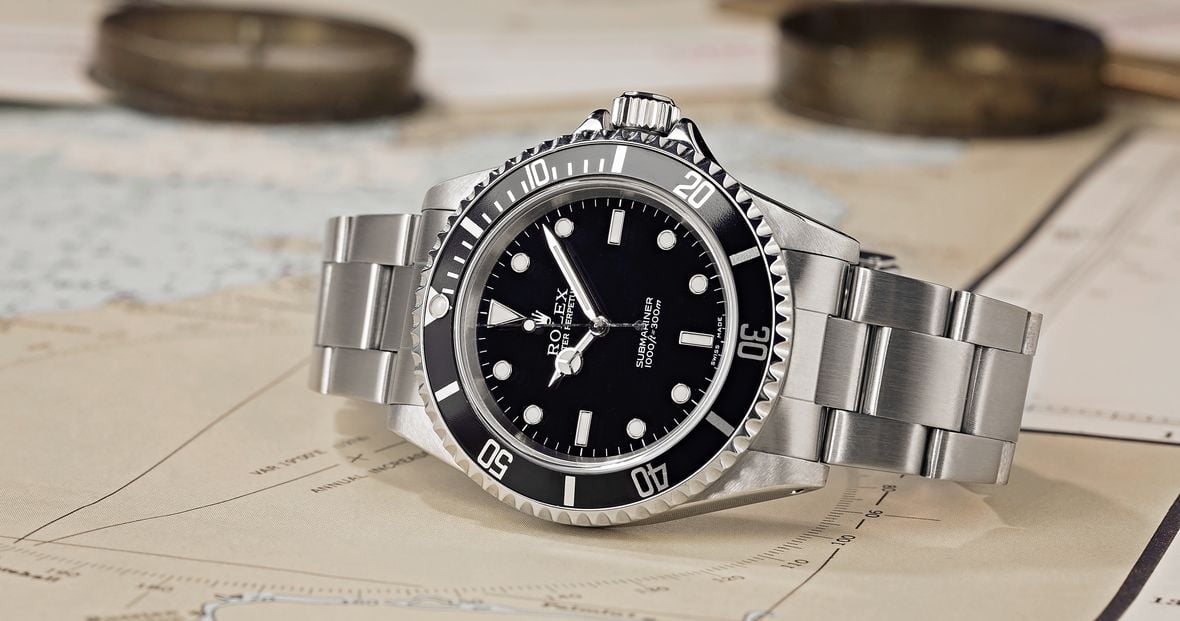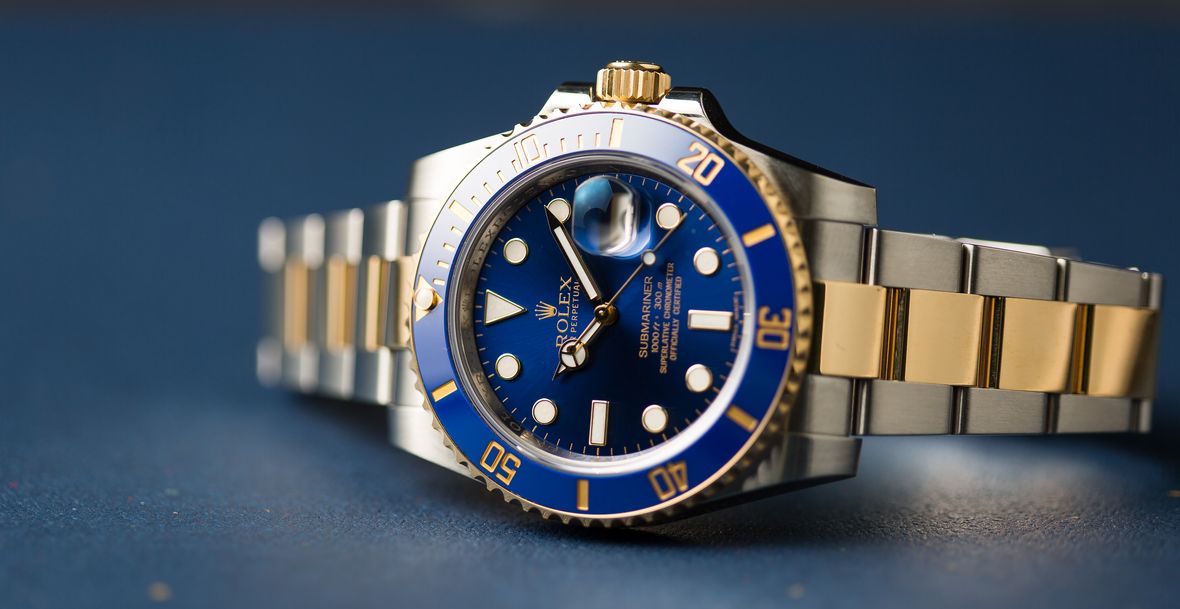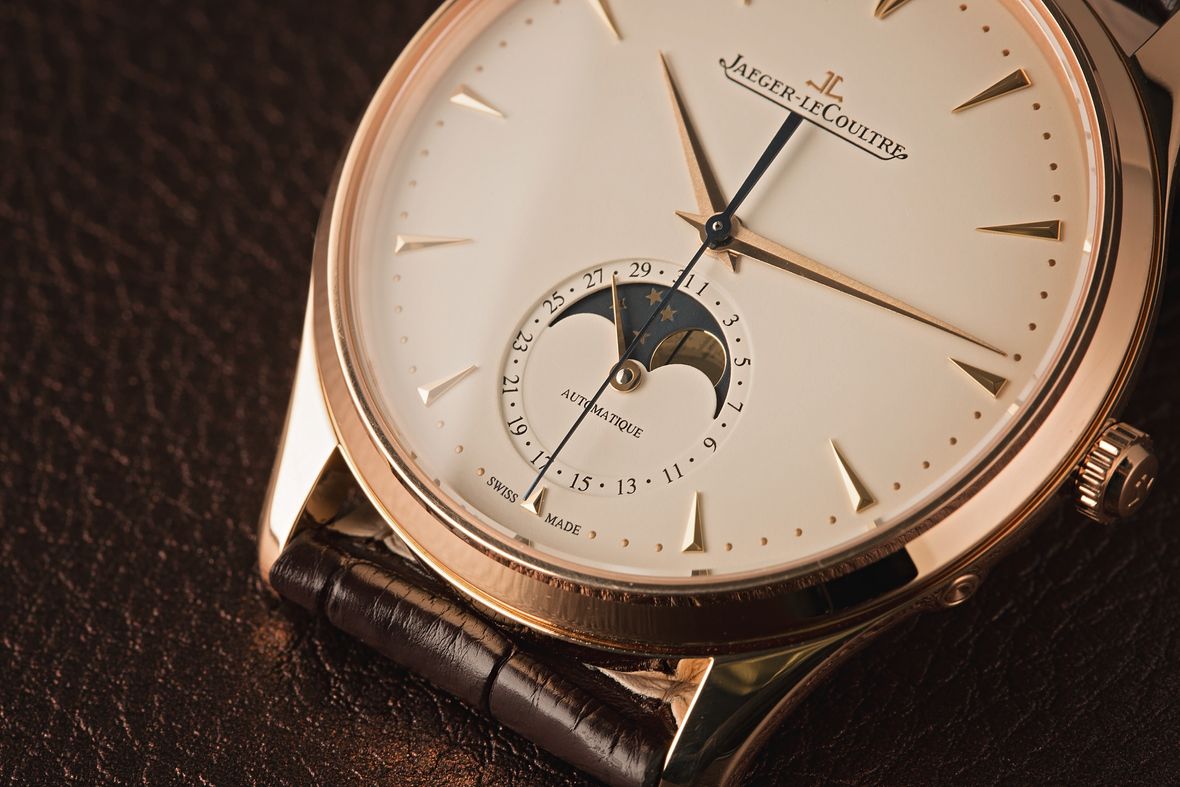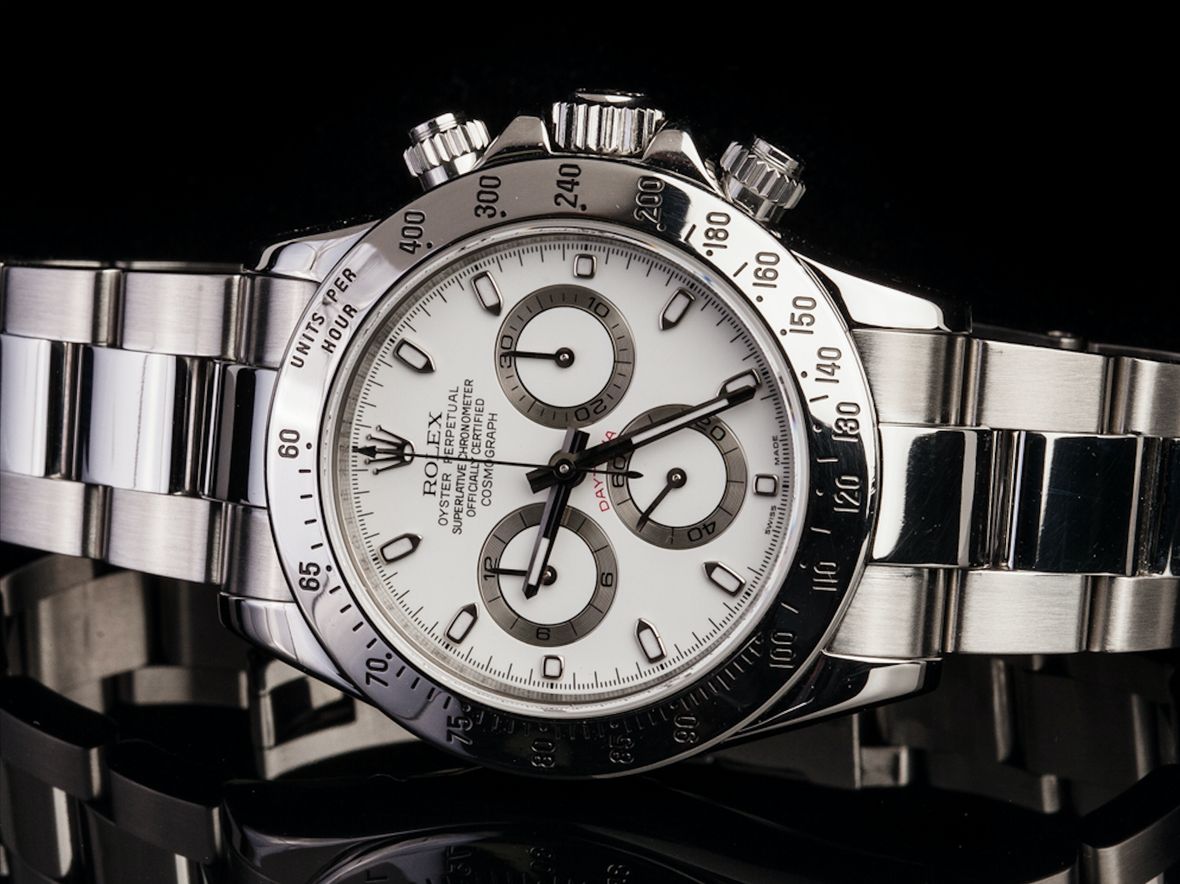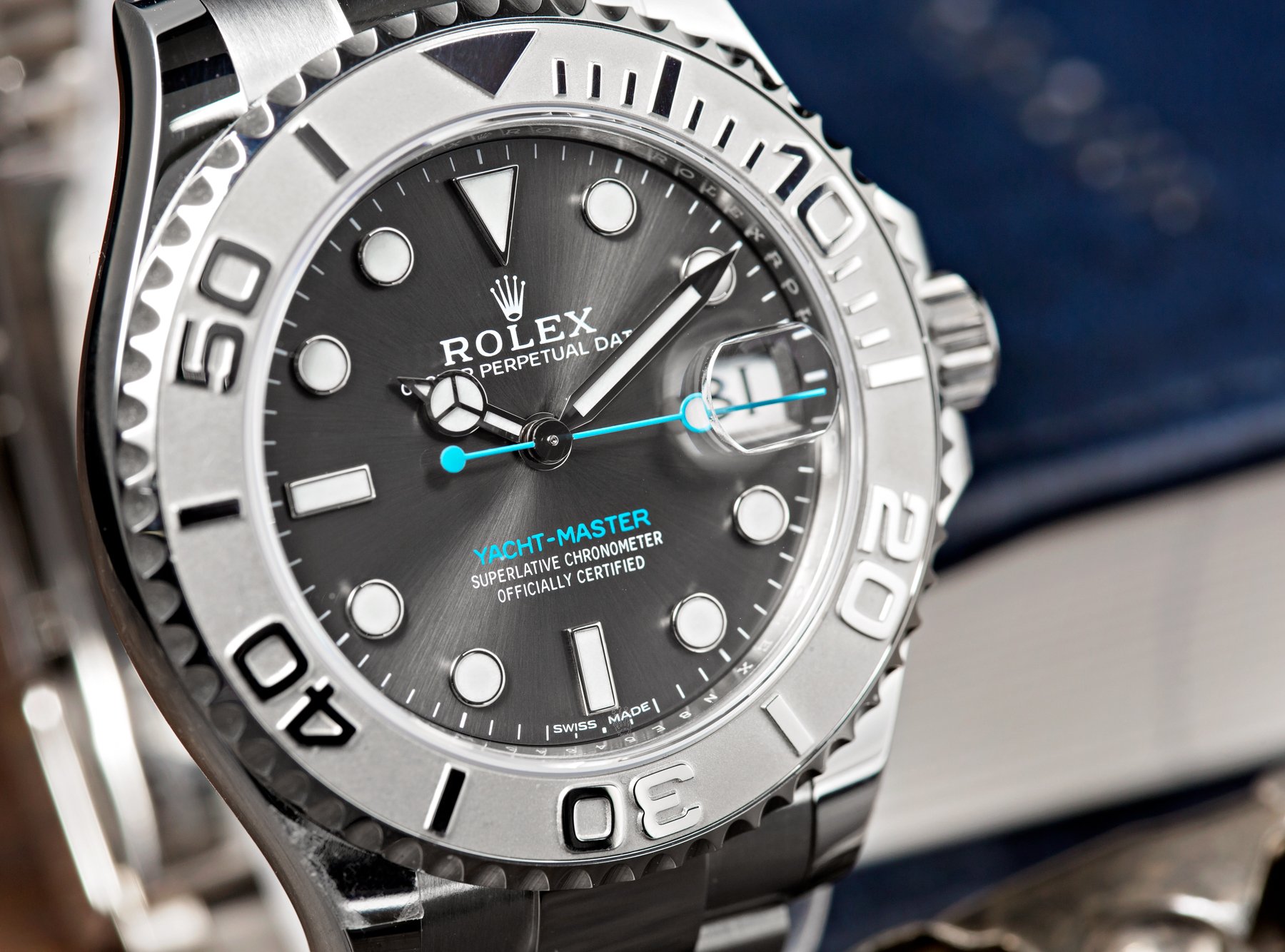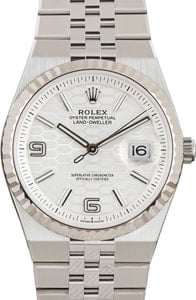Luxury watches in steel and gold are nothing new. In fact, they’ve been around for decades and practically define the watchmaking industry today with some of the biggest brands in the game, including Rolex, paving the way. It’s also true that trends come and go, and two-tone watches are making a comeback. This begs the question, what are the best two-tone luxury watches on the market right now?
Our top picks are produced by Rolex, Omega, and Patek Philippe – three of the most respected and recognized Swiss watchmaking companies in the world, whose timepieces are of the highest quality and will last for generations. That also brings us to our next question, why are two-tone watches so popular? In addition to being timeless statement pieces that you will be proud to own, watches in steel and gold are versatile and will appeal to many collectors who seek a gold watch without the top-tier price of an all-gold watch. If you’ve been considering purchasing a watch in a timeless blend of steel and gold, we hope that this list will guide you in making the best choice for your wrist and your wallet.
The Evolution Of Two-tone Rolex Watches
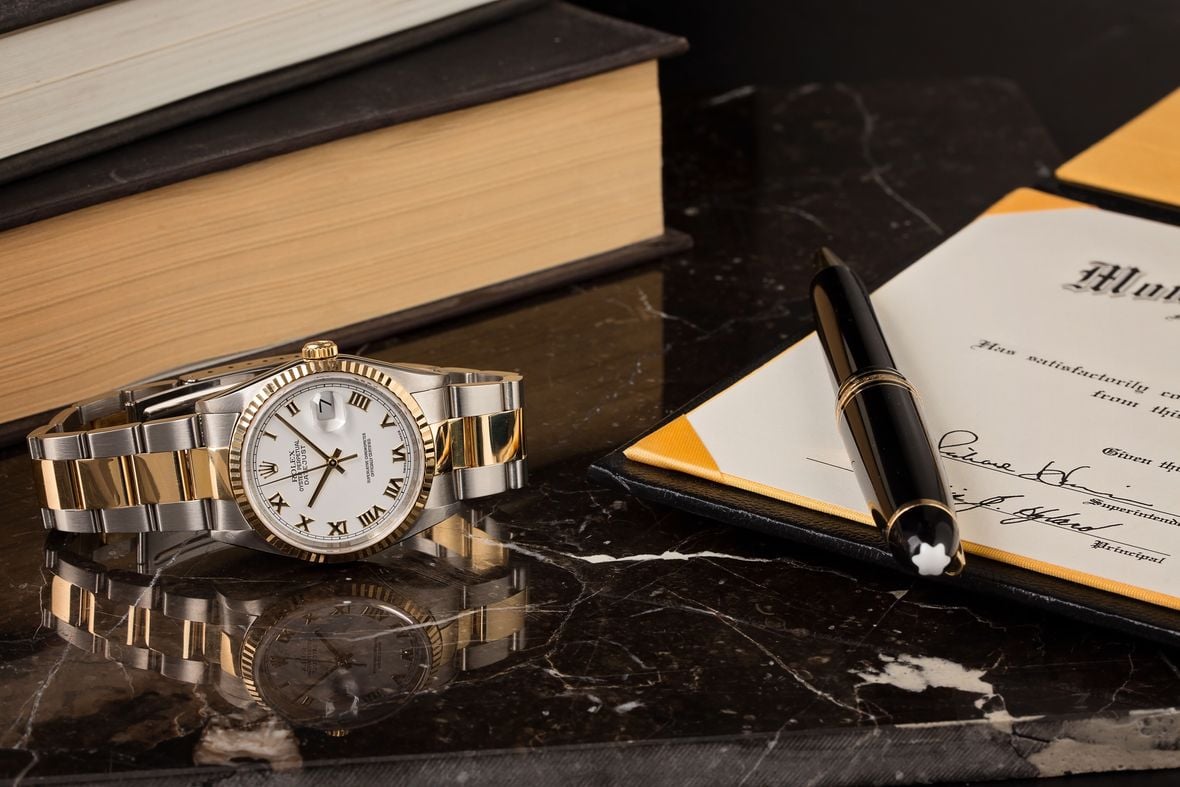
Two-Tone Steel and Gold Watches
Timepieces constructed from a mix of metals have long split opinions as well as tones. A blend of gold and steel is one of those looks that tends to drop in and out of fashion more frequently than those that exclusively use one or the other. The first two-tone watches can be traced back to the 1930s, when Rolex patented their Rolesor process. These original examples were given a case and outer bracelet links in steel, with the bezel, crown, and center links forged in yellow gold. The manufacturer dipped its toes into the new color scheme hesitantly at first and on a variety of models before turning it loose on the Rolex Datejust a few years into its run and creating perhaps the most quintessentially Rolex visual of them all.
However, the heyday for two-tone watches was really the 1980s – a decade of wanton excess and dubious tastes. A favorite among freshly-minted yuppies, as epitomized by American Psycho’s Patrick Bateman and his Rolesor Datejust, two-tone watches suddenly got an unwelcome reputation that has taken a long time to shake. But as with all things, the trend is coming full circle, and bi-color watches are starting to receive the attention of a younger audience. While it is an aesthetic that is still very much pivotal in Rolex’s lineup today, it has inspired homages from just about every brand across the industry.
Below, we will take a look at three of our favorites.
Rolex GMT-Master II ref. 126711CHNR
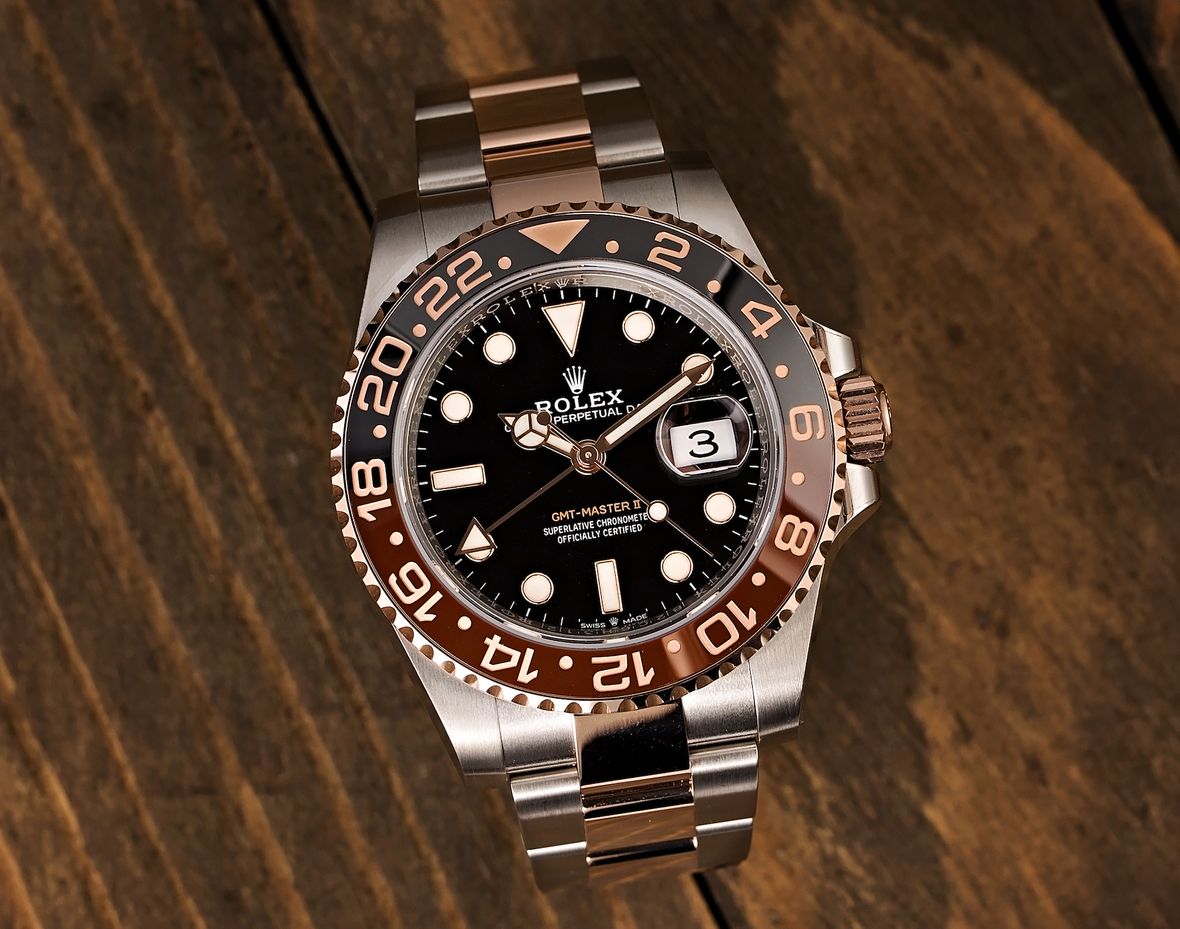
Root Beer GMT-Master II 126711 Key Features:
– Case Diameter: 40mm
– Materials: Stainless Steel & Everose Gold
– Functions: Time w/ Running Seconds, Date Display, GMT- Functionality
– Movement: Rolex Caliber 3285
– Approx. Price: $20,000 – $25,000 (Pre-Owned)
Click here for our Ultimate Buying Guide on the Rolex GMT-Master II.
It seems only fair to kick off with the originator, and Rolex’s contemporary roster offers a number of two-tone watches. The opulence of gold and the utility of steel make it the perfect choice for several of the more luxurious tool watch collection, such as the Daytona and the Submariner, and it has lately made a welcome addition to its newest release, the Sky-Dweller. Tempering all that precious metal with a splash of stainless steel has brought Rolex’s flagship traveler’s watch within the price range of more fans and collectors. However, it is a different model that has a long history of mixing the colors that we’ve picked for our list.
The GMT-Master (and subsequent GMT-Master II) has become a bona fide legend since its arrival more than 60 years ago, and the modern, ceramic-bezel range contains two different two-tone examples, both of which are heavy on retro vibes. The first was recently discontinued – a steel and yellow gold example with an all-black bezel that had been a fixture in the lineup for many years in one form or another. This modern 6-digit edition entered the Rolex catalog in the mid-2000s. However, even that piece lost out in the nostalgia stakes in 2018, when the ref. 126711CHNR arrived – a wonderful throwback to the Root Beer models of the 60s and 70s, and one that even managed to steal some of 2018’s Pepsi-dominated headlines.
This latest variation on the two-tone theme swaps the original’s yellow gold elements for Rolex’s proprietary Everose pink gold for an altogether softer and more versatile look known as “Everose Rolesor.” If you prefer the look of the original steel and yellow gold GMT Master, you’re out of luck for now as that option has been entirely discontinued in favor of the current steel and rose gold Root Beer GMT-Master II.
Inside, as one of the brand’s most recent releases, the reference 126711CHNR has been given the next-generation Cal. 3285 movement, while the discontinued Yellow Rolesor GMT-Master II (with yellow gold) is equipped with the older Cal. 3186. The newer caliber comes with a host of modernizations, including an increased power reserve of 70 hours (instead of the previous 48 offered by Cal. 3186), in addition to Rolex’s Chronergy escapement – a reworking of the traditional Swiss Lever mechanism which reportedly gives an increase in efficiency of 15%.
As much of the horology world continues to go forward by looking back, this latest piece that has drawn inspiration from the Rolex archives has succeeded in giving us just the right amount of historical aesthetic. A definite standout in a portfolio not short on heavyweights.
Patek Philippe Nautilus 5980/1AR-001
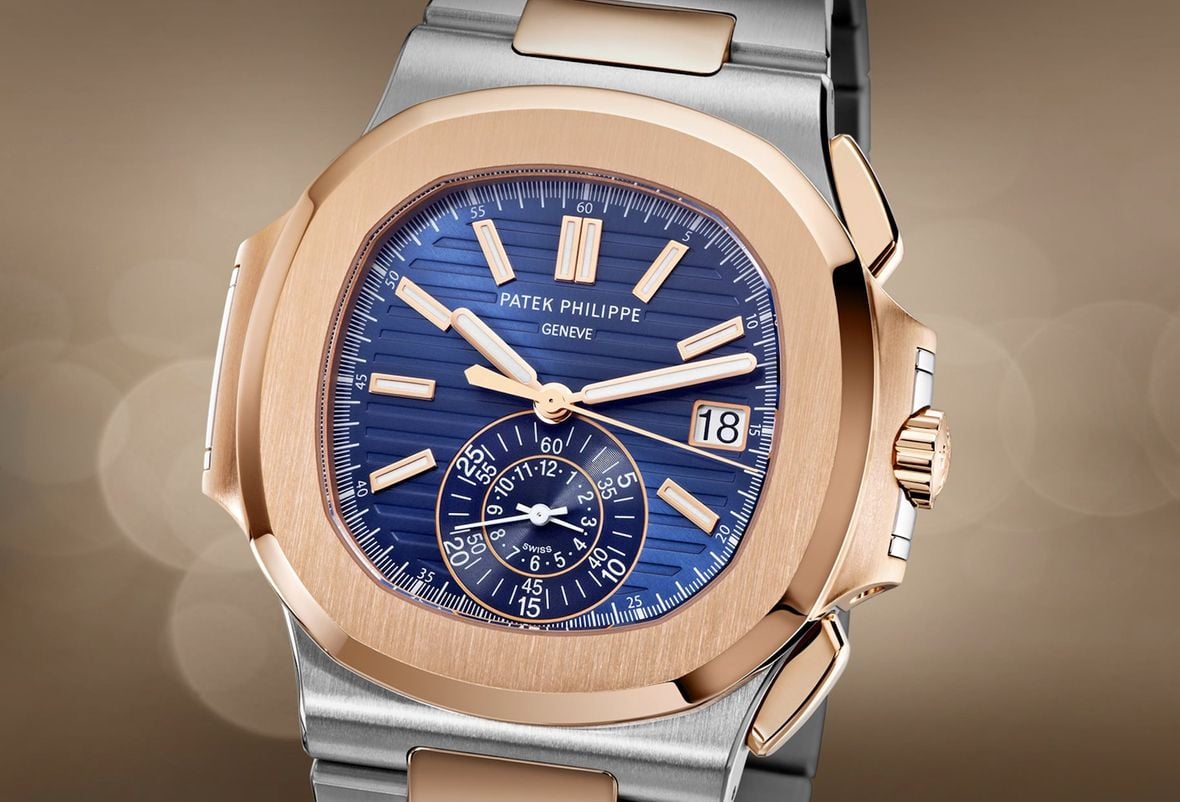
Patek Nautilus 5980/1AR-001 Key Features:
– Case Diameter: 40.5mm
– Materials: Stainless Steel & Rose Gold
– Functions: Time, Date Display, 12-Hour Chronograph
– Movement: Patek Philippe Caliber CH 28‑520 C
– Approx. Price: $130,000 – $160,000 (Pre-Owned)
Click here for our Ultimate Buying Guide on the Patek Philippe Nautilus.
Like the Root Beer GMT-Master II above, a more contemporary 18k rose gold has been used in place of traditional yellow gold for the Patek Philippe Nautilus ref. 5980.1AR-001, forming the softly rounded octagonal bezel and its ‘ear’ hinges, as well as the large chronograph pushers flanking the winding crown. Similarly, the precious metal makes up the central links of the integrated bracelet, which is easily one of the Nautilus’s most defining design elements.
The rest is a mix of satin-brushed and mirror polished stainless steel, the overall look staying true to Gerald Genta’s original vision from 1976 that is clearly based around the design of a porthole on a boat. However, it is the exquisite dial that is likely responsible for the legions of Patekaholics out there. A deep graduated blue reportedly inspired by the very first Nautilus (ref. 3700), it changes hue under differing light and is finished with horizontal stripes reminiscent of a luxury yacht’s teak decking.
The hour markers and handset are coated in lume and given a rose gold edging, as is the clever 60-minute and 12-hour mono-counter chronograph sub-dial. The trio of contrasting colors works extraordinarily well, the whole watch fairly dripping with class and opulence, without feeling the need to shout about it.
Driving it all is the in-house Caliber CH 28-520 C, housed neatly in the 40.5mm case and visible through the display back. A column wheel-controlled, flyback chronograph, the frictionless vertical disc clutch eliminates any sign of hand slop on starts and stops and allows for the sweep chronograph hand to be used as a continuously running seconds hand. Complete with date display, the 28,800vph movement provides up to a 55-hour power reserve and consists of some 327 characteristically beautifully finished parts.
All told, it is this version that is proving to be a real favorite among true Patek aficionados in addition to general fans of two-tone watches. And while it may retail for just north of $70,000, you can expect to pay about twice that (or more) if you wish to get your hands on one immediately and skip the waiting list.
The Omega Speedmaster ’57 Co-Axial
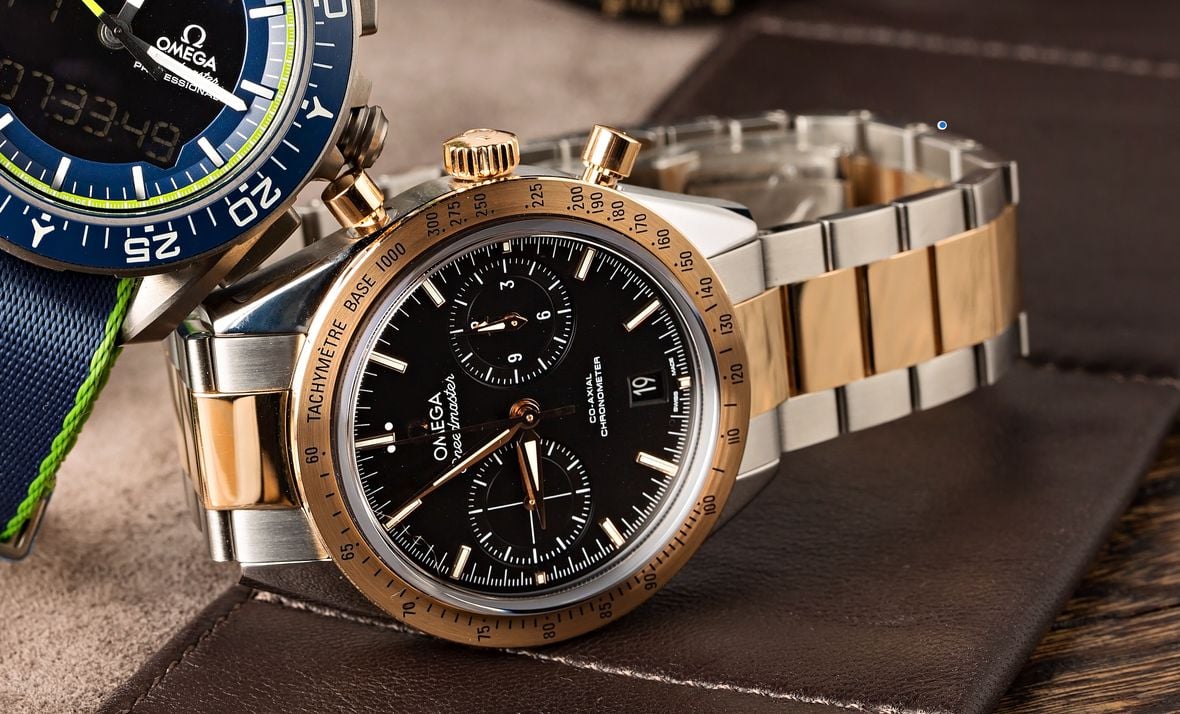
Omega Speedmaster ’57 Key Features:
– Case Diameter: 41.5mm
– Materials: Stainless Steel & Red Gold
– Functions: Time w/ Running Seconds, Date Display, 12-Hour Chronograph
– Movement: Omega Caliber 9300
– Approx. Price: $9,000 – $15,000 (Pre-Owned)
Click here for our Ultimate Buying Guide on the Omega Speedmaster.
The Speedmaster ’57 Co-Axial is one of a handful of homages that Omega has made to their original chronograph within the last several years. This, another 2013 introduction, was the first to house the brand’s wonderful in-house Caliber 9300 movement in a sub-44mm case.
Currently, there are three bi-color models sitting among the 17 different versions; a white dialed watch with yellow gold details and center links, and two black dial pieces with red gold accents – one with a similarly set up steel bracelet, the other on a leather strap. Each two-tone model in the lineup has its own character, with the red gold versions perhaps more suited to formal occasions, although all are very much on-trend at the moment. The two examples on steel bracelets share a price point, with the leather strap version saving you a bit at checkout (as one would expect).
Rather than being a carbon copy of that debut CK2915 like the 60th-anniversary edition from a couple of years ago, the Omega Speedmaster ’57 Co-Axial draws some inspiration from its ancestor while adding in its own styling traits to keep things fresh. The case, which is a very wearable 41.5mm, will certainly look familiar to anyone with a passing acquaintance with the brand, with its long straight lugs and absence of crown guards. Additionally, the ‘base 1000’ all-steel bezel is period correct, since the distinguishing black aluminum insert did not arrive until the model’s second iteration.
However, it doesn’t take an eagle eye to spot the most glaring difference between old and new – the number of sub-dials. The Co-Axial 9300 has allowed for a fairly radical redesign of the chronograph. The small seconds indicator is still sitting at the nine o’clock; however, the 12-hour and 60-minute counters have been combined into one unit and placed at the three. Taking that time-honored tri-compax layout and reducing it by one has left plenty of room – even with the addition of a date window at the 6 o’clock location. Additionally, the sub-dials are significantly larger than before, greatly aiding legibility as well as giving an almost perfect balance.
The handset, too, owes more to the second generation Speedy than the first, with Alpha-style main hour and minute hands. However, the classic Broad Arrow is still there if you look hard enough; it now makes its appearance as the small chronograph hour pointer.
Aesthetics aside, it is the movement that demands most of the attention. The Caliber 9300, which debuted in 2011, is visible through the domed sapphire back, which gives the Speedmaster ’57 a little more height than you might expect. Unlike the chronograph movement it replaced, the Cal. 3313, the Cal. 9300 was specifically designed around the Co-Axial escapement, rather than having it as a retrofitted addition. The self-winding, 54-jewel, column wheel-controlled mechanism has been given a silicon Si14 hairspring and boasts a 60-hour power reserve. Made entirely in-house, it has been a triumph for Omega and is finished with the house’s own Geneva waves in arabesque.
All told, the Speedmaster ’57 Co-Axial is, much like a two-tone watch’s color scheme, pretty much the best of all worlds. Just enough of a throwback to the icons of the past, with plenty of modernity in all the right places.
BONUS: Rolex Datejust ref. 16233
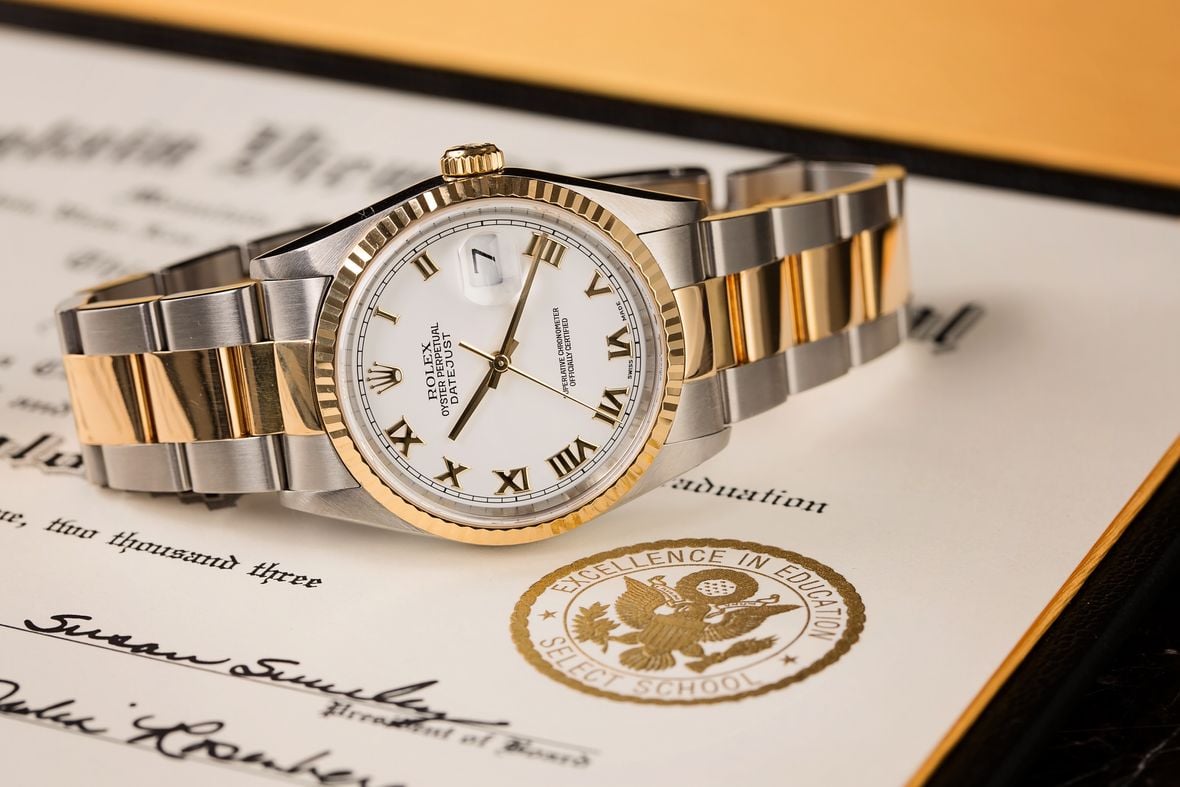
Two-Tone Datejust 16233 Key Features:
– Case Diameter: 36mm
– Materials: Stainless Steel & Yellow Gold
– Functions: Time w/ Running Seconds, Date Display
– Movement: Rolex Caliber 3135
– Approx. Price: $6,000 – $8,000 (Pre-Owned)
Click here for our Ultimate Buying Guide on the Rolex Datejust.
The reference 16233 is certainly not as flashy as a two-tone Patek Philippe Nautilus or the mega-desirable Rolex “Root Beer” GMT-Master II; however, it offers a rock-solid in-house movement and the quintessential Rolex look at a price that is still relatively attainable. Rolex’s catalog is packed full of two-tone watches, but the reference 16233 Datejust might just be the best bang for your buck currently available.
First introduced in 1988, the reference 16233 Datejust is the classic 36mm Yellow Rolesor (stainless steel and 18k yellow gold) version of Rolex’s iconic date-displaying chronometer wristwatch. Although the Caliber 3135 movement that powers the Datejust 16233 dates back to the late 1980s, Rolex only just recently discontinued it this past year, and it is easily capable of keeping time within COSC standards.
With a stainless steel and 18k gold construction topped off with Rolex’s iconic fluted bezel, the ref. 16233 Datejust could be mistaken for a more delicate dress watch; however, with 100 meters of water resistance, a scratch-resistant sapphire crystal, and the proven reliability of the in-house Caliber 3135 movement, the Datejust 16233 is a classy watch that can be worn all-day, every-day.
At 36mm in diameter, the reference 16233 is a highly versatile package and looks at home on most wrists, regardless of size or gender. Additionally, the ref. 16233 Datejust pre-dates the arrival of Rolex’s “Super Case” that features thicker lugs, so this version of the Datejust retains the classic proportions that served as the backbone of Rolex’s catalog for decades.
Given modern prices for many stainless steel models, two-tone Rolex watches are becoming increasingly more attractive value propositions and slightly older models like the ref. 16233 Datejust represent some of the best buys in the world of luxury watches.
*Supplementary image courtesy of Patek Philippe.
